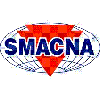With a Daihen robotic arm in their shop’s arsenal, Howard Products Inc. has increased its production of metal and aluminum products times three.
“We couldn’t do what we do without it,” says Martha Hawley, who manages the Worcester, Massachusetts-based shop with her husband, David. “Aluminum is difficult to weld. It requires attention, and it requires attention all the time because you’ve got to flow it all together. It’s a very long weld. (The arm) has freed up our welders to go on and do other welding projects throughout the day.”
The Daihen is a two-station robot, but Howard runs the right station only for 8 hours a day. With the arm handling most of the work to produce Howard’s patented Shortening Shuttle out of aluminum, the arm operator is free to make retouches.
“We have about a 1 percent touch up rate,” Hawley explains. “But we run a 99.5 percent quality control, and that’s almost unheard of.”
Howard’s embrace of new technology is ingrained in the shop’s history. In anticipation of his son joining the company in 1979, Brad Hawley, David’s father, purchased a computer-controlled punch machine.
“Even though he knew nothing about it; he couldn’t run it. But he knew his son was graduating from Worcester Polytechnic Institute and could run it,” says Hawley. “And ours was one of the very first computer controlled machines doing fabrication work in Worcester.”
Years later, David, a mechanical engineer by train, created a robotic arm they called “Roger Rabbit” to help with producing the Shortening Shuttle.
“Roger rabbit ran a lot of years until the Daihen came along, and it made financial sense to buy one,” Hawley says, explaining that they needed to go even faster to meet demand. “The physics of fabrication have not changed. It takes as much force to bend today as it did 100 years ago. The difference is in machine reposition and reaction time, in moving the head of the machine from one place to another.”
She adds, “As you would say, we’ve always been on the edge of what’s better, what’s more efficient.”









